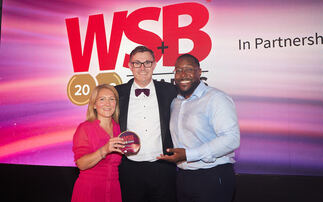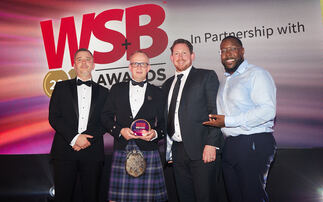Having a large vehicle fleet often means a substantial cost. Owain Thomas examines how Skanska has used driver safety to achieve a substantial return on minimal investment.
Business case:
- Across many industries it is common for accidents involving employees driving to outnumber those on sites
- Skanska introduced a wide-ranging driver safety course including practical and behavioural training
- Vehicle telematics are being rolled out with driver reward programmes planned
- The company has successfully cut accidents, reduced its risk profile and saved £250,000
On-site safety is typically one of the primary concerns for any organisation, but especially for those in the heavy industries. However, all too often there is less awareness of the risks of moving between sites – when driving becomes a work activity. Indeed, companies would, in some cases, probably struggle to exist without addressing the issue if road accident levels were seen in any other area of construction work.
When Alison Moriarty joined Skanska as fleet risk and compliance manager, she wanted to apply the firm’s exemplary on-site safety record to its vehicle fleet as well. The process of doing so has been a winding one but it is producing real results with accidents down and the firm benefiting economically as well – its last fleet insurance quote cost £250,000 less than last year because of the measures that have been put in place.
“We treat driving the same as any other work activity and apply the same safety standards. We have the same focus on getting it right. So that’s the starting point, really: making sustainable improvements in fleet safety is rooted in driver behaviours,” Moriarty explains. “Most people know how to drive safely; we just don’t always choose to do so. The key is to help drivers understand the importance of choosing to do so.”
Championing safety
Moriarty’s role as a Driving for Better Business champion also gives her a greater idea of how to encourage the business to understand the financial savings and the moral, legal and financial implications of not considering road safety correctly.
All drivers at Skanska undergo risk assessments and receive training targeted at those areas highlighted as being weak. And all licences are checked through the DVLA: at least every 12 months for car drivers –but more frequently for those with points – and every three months for each commercial driver. The firm is also rolling out telematics across all its vehicles and is considering how best to recognise drivers who excel.
“We look at how vehicles perform, in terms of speeding, harsh braking, harsh cornering, and offer advice and guidance where there are areas that can be improved,” Moriarty continues.
Perhaps the biggest reason for Skanska’s success is the approach it has taken, looking at driving as a work activity. This has persuaded the firm’s health and safety department to become involved in it.
“I don’t think it’s sustainable for any company to just have one person in fleet who does this; it’s got to be seen as another thing that is a part of our health and safety culture. I’ve been very lucky that our health and safety director, and his team, are 100% on board with doing it and we work very closely together to achieve results,” she adds.
This buy-in has led to a significant step up in the way accidents are investigated, with all health and safety staff trained by an ex-traffic policeman. The results of these investigations are then fed back to enable the business to understand which areas need more improvement.
Better behaviour
Indeed, much of the driver training is not based on practical issues, but on behaviour: addressing attitudes to and responsibilities of driving, rather than skills at the wheel. This includes speeding, drink and drugs, seatbelt wearing, and many other areas that contribute to road accidents.
As ever, involving all parts of the business is important, and line managers prove particularly critical here as they can have a significant influence on how a driver’s workload is distributed. Moriarty has made these a key point of contact.
“There are different challenges with car drivers and commercial drivers. With commercial drivers, it’s often easy to vilify the white van man image but there are a lot of factors that need to be considered, such as work scheduling and the pressures to ‘get the job done’. We are taking a holistic approach and working with our drivers and managers because we understand that, if we want to get it right, we have to do it together. So it’s very much a collaborative approach.”
There can be competitiveness between drivers but the firm reports that it has been quite easy to reverse that. As the telematics start to roll through into vehicles, league tables of the best and worst drivers can be produced. That competitiveness is then directed to being the better driver on the board, rather than the fastest in the van.
Another of the methods that has worked best is to focus on the importance of family to drivers – this helps them to realise that staying safe is important for their families and if they do not go home safely at the end of the day, then their wage is not going to their family either.
“We are very concerned with our drivers’ safety and want them to understand the possible consequences, to themselves and their loved ones, of not driving safely. For instance, if you are killed in a collision and are not wearing your seatbelt at the time, it’s likely that your insurance company would not pay out to your family. Also, if you were to lose your licence for accumulating speeding points or drink driving, then you would lose your licence and ultimately may lose your job,” Moriarty adds.
Work activity
For car drivers, the biggest challenge is getting them to see that driving is a work activity and that they should not be doing something else – using the driving time to catch up on calls and other office tasks, for example. As a result, the touchy subject of hands-free kits is on the agenda.
“We are currently looking at the use of hands-free kits in company vehicles because we have accepted that there is a risk associated with using them. The Transport Research Laboratory conducted a study that showed talking on a hands-free kit can affect your concentration more than if you’re over the drink-drive limit. So we’re looking really closely at that now,” she adds.
In the construction industry, it would not escape attention from management if an employee were spotted climbing scaffolding and talking on the Bluetooth at the same time. But research also shows that driving is a higher-risk activity than construction, so it can be vital to point out these discrepancies to management to help them understand the risks involved.
It is also important to highlight that while work phone calls may be important, they are not a matter of life and death. There is rarely a time when a call cannot wait an hour for a driver to come off the road.
These measures are particularly important when it becomes clear that car drivers often contribute more to the accident rates of company fleets than commercial van drivers. But Skanska is not only focusing on its own drivers. It is helping draw attention to road safety in both the business and local community.
Supporting the supply chain
“Skanska works very closely with the supply chain but also beyond that through initiatives like Driving for Better Business. As a business champion I go out and conduct workshops and seminars and talk at conferences about why it’s actually good business to focus on your driving safety,” says Moriarty.
“Our approach is that even though we may not have direct business dealings with other companies, if their drivers are driving more safely then our drivers are safer – we all use the same road. So it just makes sense to try to push this across all fleets out there. Also, you’re driving where people’s families are, their children, their loved ones, so from that aspect it’s important too.”
This commitment extends into non-business groups as well: “We have a big fleet and that fleet is always driving in the local communities, so we’re making sure that we drive appropriately – things like keeping to 20 mph around schools – and also working with schools to show how people in the communities need to be aware of how they can stay safer.”
High schools have been a particular target for Moriarty and she uses Brake’s Too Young To Die programme aimed at young drivers and people just coming up to doing the test. Meanwhile, lower-intensity sessions are also conducted for younger children. These use animal camouflage to relay the importance of being visible on roads while high-visibility jackets bearing the school logo are also given to the school.
“So we are focusing quite a lot on the vulnerable areas – pedestrians, cyclists and elderly people – and we’re putting that right through our supply chain as well,” she adds.
Impressive return
The net result of this has been an impressive return for Skanska. Earlier this year, the firm renewed its fleet insurance and saw premiums for the year drop by a massive £250,000 due to the programme.
“There are tangible benefits to businesses that engage in these activities such as reduction in fleet insurance premiums, reduction in collision costs and such, and our brokers certainly appreciate the work that we have done on road risk. The benefits aren’t purely in collision reduction; it’s also about maintenance costs and replacement costs for brake pads and other car consumables,” says Moriarty.
Targeting drugs and alcohol is another way to reduce the risk of road accidents and having a company policy towards this can prove beneficial too. That is not the only benefit from the scheme, but it seems, understandably, to have been the most visible and the one that has garnered most attention across the business.
Indeed, by using internal communications Skanska has allowed those not involved to see just how important the project has been. That also gives staff who have been a part of it the opportunity to realise how powerful an impact their actions have had. This has produced a growing momentum across the business and support for the programme.
“The reductions in our insurance premium have been publicised on our intranet, ‘OneSkanska’, so that everyone can see the benefits that our risk programme is having. There are other benefits for us to reap as well – driving safely is always driving more economically in terms of fuel usage. I think it’s gathering momentum with a lot of people who weren’t initially involved in it – who can see that it’s very interesting and beneficial to their area of work as well,” she adds.
Producing benefits
The project has also produced a reduction in accidents among the fleet, again producing many related benefits. And all this has been achieved on a modest budget and with a lot of energy from Moriarty and her team.
One of the key reasons for this was the aim to fit it in with the business, making sure it was not hampering the daily operations. As Skanska has a lot of shift workers, early starts and late finishes have been necessary to fit in with working patterns, giving tutorials and other sessions either before or after shifts. There has been a cost involved with installing the telematics in to the vehicles, but this has been quickly repaid.
This has been the biggest outlay of the whole project, but the rate of return appears to be quite a quick one – with fuel consumption and other expenses being reduced too. Its impacts can also be felt over a much longer term than other initiatives and training programmes.
All in all, the project is seeing Skanska, its employees and the wider community – whether on the road or not – reaping the benefits of its investment.





